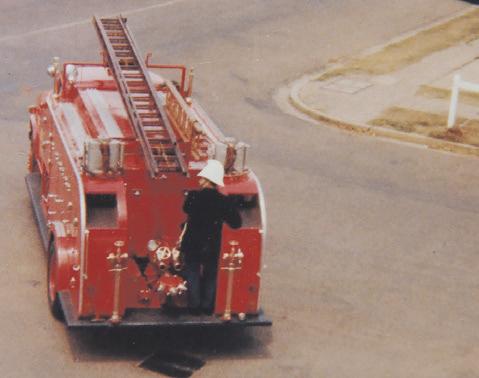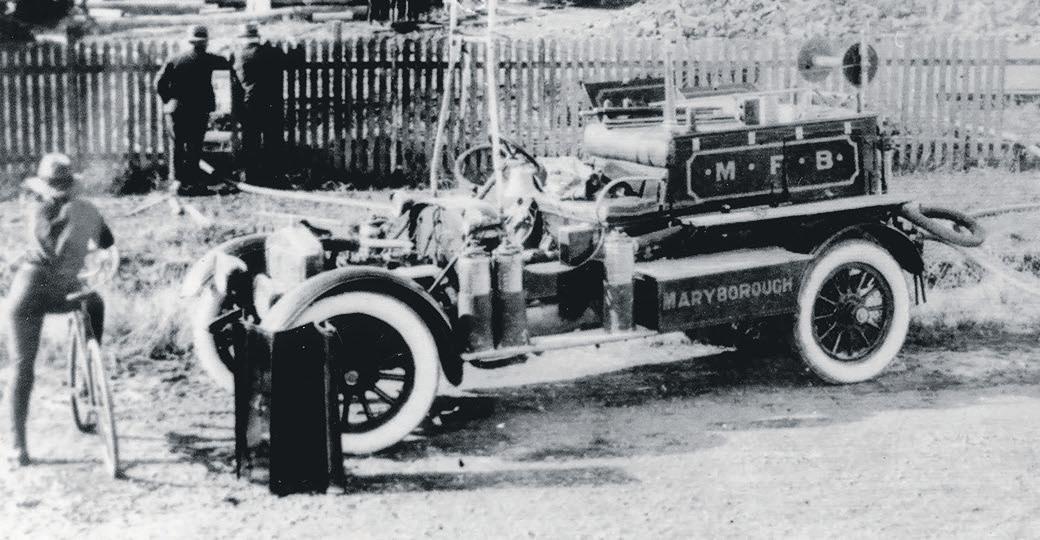
3 minute read
MARYBOROUGH FIRE BRIGADE - A BRIEF HISTORY
TREVOR McTERNAN
DESPITE efforts to form a fire brigade from as early as 1864, the first recorded brigade was on 12 July 1882 when 21 members enrolled, and Mr D. Kerr was elected Superintendent.
The Brigade has operated from three locations - cnr Kent and Lennox St 1884 - 1887, Adelaide St near Kent St 1887-1951 and at the cnr of Lennox and Alice Streets (1951In 1885 a Merryweather steam pumper arrived.
This appliance was called “Progress” and cost 500 pounds ($1000) being the most expensive engine in the colony at the time.
At this time a fireman was paid two shillings (20cents) an hour when attending a fire and one shilling and six pence (15 cents) while training.
The Adelaide Street station was the first brick and stone fire station north of Sydney with an 82 ft tower from which the watchman could observe all parts of the city and give warning of a fire.
The city was broken into six zones. When the watchman noticed a fire, he would give several staccato rings to gain attention and then toll one to six denoting the zone.
The off-duty firemen would then travel to the indicated zone of the city to assist. car called an “Alldays and Onions” and entered service in 1925. The first time it was to be used it had a flat tyre and the horse was again used to pull the steamer.
The only recorded Brigade fatality was in 1905 when the fire horse “Dolly” was engulfed in a tongue of flame while at a fire at the Southern Cross Hotel in Lennox St (on cnr of Ellena St).
The horse was trained to remain stationary which is what it did, despite its burns. The horse had to be destroyed.
Also, in 1905 the brigade was called upon to burn down a house in which Pneumonic plague victims had died to reduce the risk of wider infection.
The brigade has attended many major fires over the years including several sawmills, sugar mill, many hotels, car dealerships, shops and innumerable houses.
One interesting fire was Denham’s Warehouse in 1927.
The warehouse stored ten ammonia cylinders which, as a result of the heat, exploded, peeled back like a banana, and shot through the air for several hundred metres.
One cylinder passed through the front wall of a nearby house and caused fatal injuries to the occupant. Japanese bombing target because of the city industry including shipyards and the RAAF base.
The Brigade had at least 13 trailer pumps which would allow water to be pumped from the Mary River and through a system of “pump relays”, to provide a reliable source of water for firefighting in the event of water mains being damaged by bombing.
These drills continued until the early 1960’s during the Cold War period.
As technology changed, so did the brigade equipment. The Wheeled Escape (as seen in the display) was replaced by the hydraulic platform and larger appliances and pumps came into service.
While no longer independent, the Maryborough Brigade is part of the Queensland Fire and Rescue Service and still provides a much need service to the district.
An exert from a poem written in 1925 by “Bannerman” called the “Old Brigade” is as true now as it was then.
“Like heroes they did fight the flames in years now past and gone. Whenever danger showed its head ‘twas there our heroes shone”.
Irrespective of era, that is what firefighters have done throughout history and continue to do so today.







